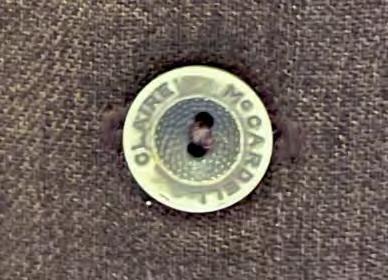
1 minute read
What I Learned from Claire
Written by Sarah Hall
Dear Reader,
Advertisement
Might I ask what you are wearing today? As I type this, I am wearing wide-leg trousers with a blouse and a linen jacket. Imagine what I might have been wearing in 1905, the year Claire McCardell was born. I likely wouldn’t feel properly dressed without gloves and a hat. My day dress would be full-length and fitted to a corseted waist. I might have wide shoulders, puffed sleeves, tight cuffs, an elaborate collar, and be iced like a cake with lace trimmings, embroidery, and embellishments. If I was young and progressive, I might wear a suit with a shirtwaist, inspired by menswear. But I would still be wearing a long skirt, with a fitted waist and constricting undergarments, and I would still be encumbered by close fitting fabrics and yards of material. And significantly—my clothes would have been made to order, sewn by a seamstress to my distinct measurements.
Now imagine what I might be wearing in 1958, the year Claire McCardell died. The New York Times described her, in the obituary they ran on March 23, 1958, as an “All American designer for the All-American girl.” Google images reveal dresses fitted at the waist, with short full skirts -- but also cardigan sweaters, soft looking untucked tops, narrow trousers in a variety of lengths, sleeveless tops, and even shorts. And these clothes were probably purchased at a department store, in a standardized size, because over the first half of the 20th century, ready-to-wear clothes became the norm.

Frederick, Maryland’s own Claire McCardell was a hugely influential force creating change in American


